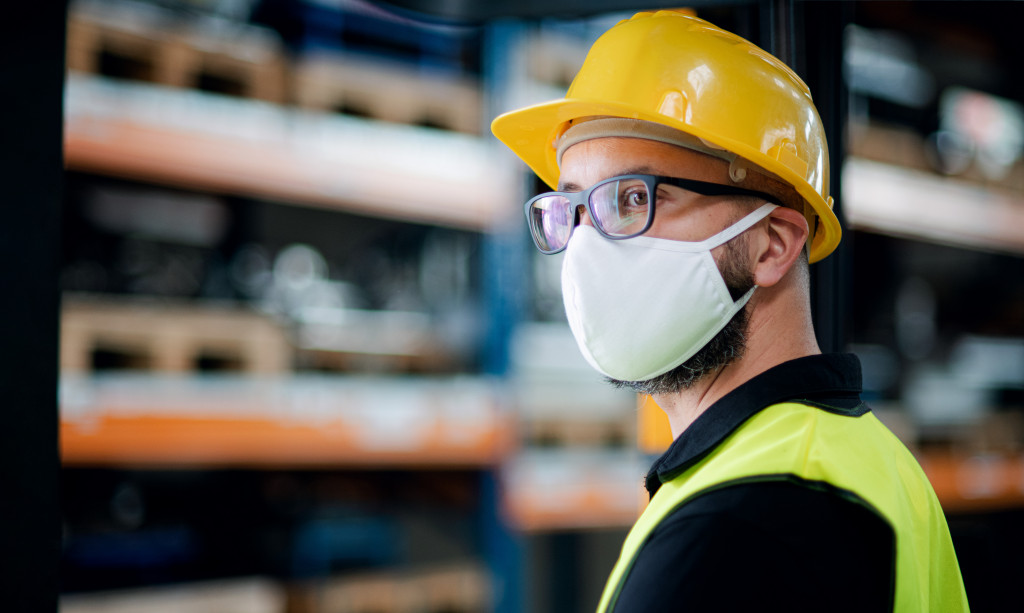- Wear protective gear like hard hats, safety glasses, gloves, and steel-toed boots.
- Follow proper lockout/tagout procedures and use appropriate locks and tags.
- Train employees on properly using equipment to reduce the risk of accidents.
- Invest in electrical control panels to improve safety and efficiency.
- Maintain equipment regularly to reduce the risk of accidents and malfunctions.
Working with industrial equipment can be dangerous, and following proper safety measures is crucial to avoid any potential accidents. The use of heavy machinery, sharp tools, and chemicals can pose significant risks to workers if proper precautions are not taken. This guide will cover five essential safety tips to help you stay safe while working with industrial equipment.
1. Wear Protective Gear
Wearing protective gear is essential when working with industrial equipment. When selecting protective gear, choosing gear that fits you well and is appropriate for the job is important. Loose clothing, jewelry, and long hair should be secured or removed to avoid getting caught in machinery. Additionally, inspect your protective gear regularly to ensure it’s still in good condition and will provide the necessary protection.
Here are some protective gear you should wear:
Hard Hats

Hard hats are a must when working in construction or any other environment where there is potential for debris to fall from overhead. They protect your head and face from injury, so make sure you wear one that fits properly and meets the safety standards of your industry. Inspect it regularly for dents, cracks, or other damage that could reduce its protective capability.
Safety Glasses
Safety glasses are necessary for chemical handling, welding, grinding, chipping, and more. These specialized lenses help protect your eyes from dangerous particles and splashes while filtering out UV rays. Look for ones with anti-fog coating and adjustable straps to ensure they fit comfortably.
Gloves
When working with tools and machinery, gloves protect you from cuts, scrapes, and other hazards. Make sure to choose gloves made from the appropriate material for your job; for example, leather gloves provide the best protection for welding jobs, while nitrile gloves are better for chemical handling.
Steel-Toed Boots
Steel-toed boots are a piece of essential safety equipment in many industries where workers are exposed to heavy objects falling or rolling onto their feet. These boots offer extra protection against impact and compression injuries while providing proper support to help reduce fatigue and keep your feet comfortable throughout the day. Look for ones that fit properly and meet ANSI and ASTM safety standards.
2. Follow Proper Lockout and Tagout Procedures
Lockout/tagout procedures are designed to protect workers from the sudden release of energy from machines during maintenance or repair. These procedures involve locking the machinery and ensuring it’s inoperable before performing maintenance or repair work. Tagout procedures involve placing warning tags on the equipment to indicate that it’s under maintenance and should not be used.
Proper lockout/tagout procedures can prevent accidents and save lives. Before starting maintenance or repair work, follow these procedures and use the appropriate locks and tags.
3. Train Employees on the Proper Use of Equipment

Training employees on properly using equipment is essential to ensure their safety. Employees should be trained on how to use equipment, recognize potential hazards, and what to do in an emergency. Additionally, it’s important to ensure that employees are qualified to operate specific equipment and have the necessary certifications.
Regular training sessions can help ensure that employees are up-to-date on safety procedures and know how to use the equipment correctly. Additionally, post safety guidelines and warnings in visible locations to remind employees of potential hazards.
4. Use Electrical Control Panels
Investing in electrical control panels can significantly improve safety in industrial settings. These panels control and protect electrical equipment, preventing electrical hazards such as electrocution and fires. Additionally, control panels can improve efficiency by providing easy access to equipment controls.
When selecting electrical control panels, choose panels that meet safety standards and are appropriate for your equipment. Additionally, it’s important to have control panels installed by qualified professionals who can ensure that they’re installed correctly and functioning properly.
5. Maintain Equipment Regularly
Regular equipment maintenance is essential for safety. Equipment not maintained properly can pose a significant risk to workers. Regular maintenance can prevent equipment from malfunctioning, reducing the risk of accidents.
Make sure to schedule regular maintenance sessions and perform routine inspections of equipment. Additionally, document maintenance and inspection records to ensure that equipment is up-to-date and in good condition.
In Closing
Working with industrial equipment can be dangerous, but following proper safety procedures can reduce the risk of accidents and injuries. Ensure to wear protective gear, follow lockout/tagout procedures, train employees on proper equipment use, invest in electrical control panels, and maintain equipment regularly to ensure safety in the workplace. By implementing these safety tips, you can help create a safer work environment for yourself and your coworkers.